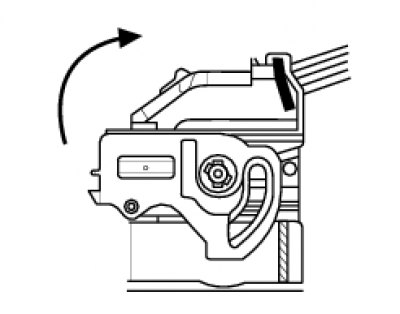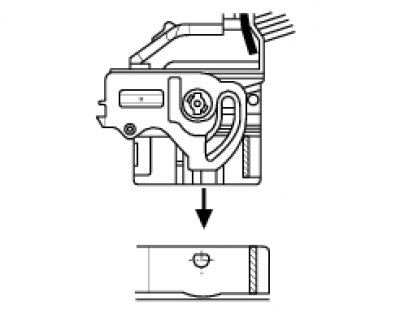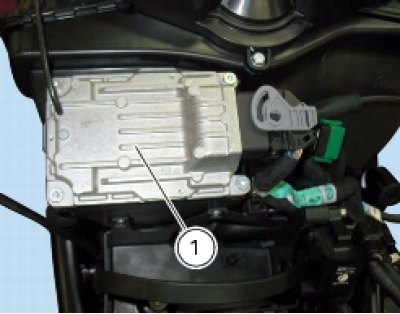
It controls both the injectors and the coils, thus controlling fuel injection and ignition in accordance with the engine operating conditions detected by the following sensors:
- Absolute pressure sensor (misures the barometric pressure and the engine load in Speed Density mode)
- Air temperature sensor (measures intake air temperature)
- Engine temperature sensor (measures the engine temperature)
- Timing/rpm sensor for engine rotation speed and the position of each cylinder relative to TDC
- Throttle position sensor (measures the throttle opening angle).
- The ECU also monitors battery voltage so that it can adjust injector opening time and ignition coil charging time accordingly.
- The ECU determines the following values.
- Amount of fuel delivered to each cylinder with a sequential non-parallel control
- Injector closing time and therefore injection timing relative to the end of the induction stroke for each cylinder
- Ignition advance.
Caution! The maps, which include ignition advance values, injection times, crankshaft angle for injector closing and all correction curves as a function of temperature and atmospheric pressure values, are stored in the Flash Eprom of the ECU. The above values are preset by the Manufacturer after testing the motorcycle under different riding conditions.
These settings cannot be changed.
Removal of the electronic control unit
In order to remove the ECU (1) it is first necessary to remove the fuel tank (Removal of the fuel tank), disconnect the ECU wiring connector (2) and unscrew the fixing screws (3).
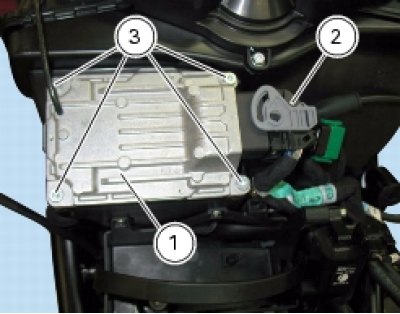
Refitting the electronic control unit
Fix the ECU (1) to the airbox with the fours screws (3) and reconnect the wiring connector (2).
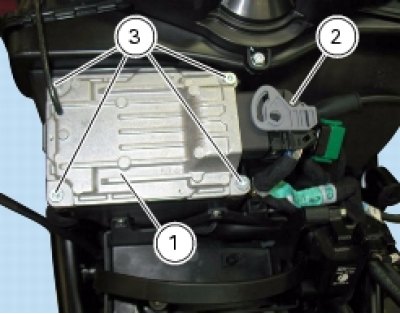
Tighten the screws (3) to the specified torque (Engine torque settings).
The connector (2) is 48 PIN connector.

Make sure that the clip (A) for the connector (2) is in its "open" position (as shown in the diagram).
Rotate the clip (A) to secure the connector (clip in the "locked" position).
